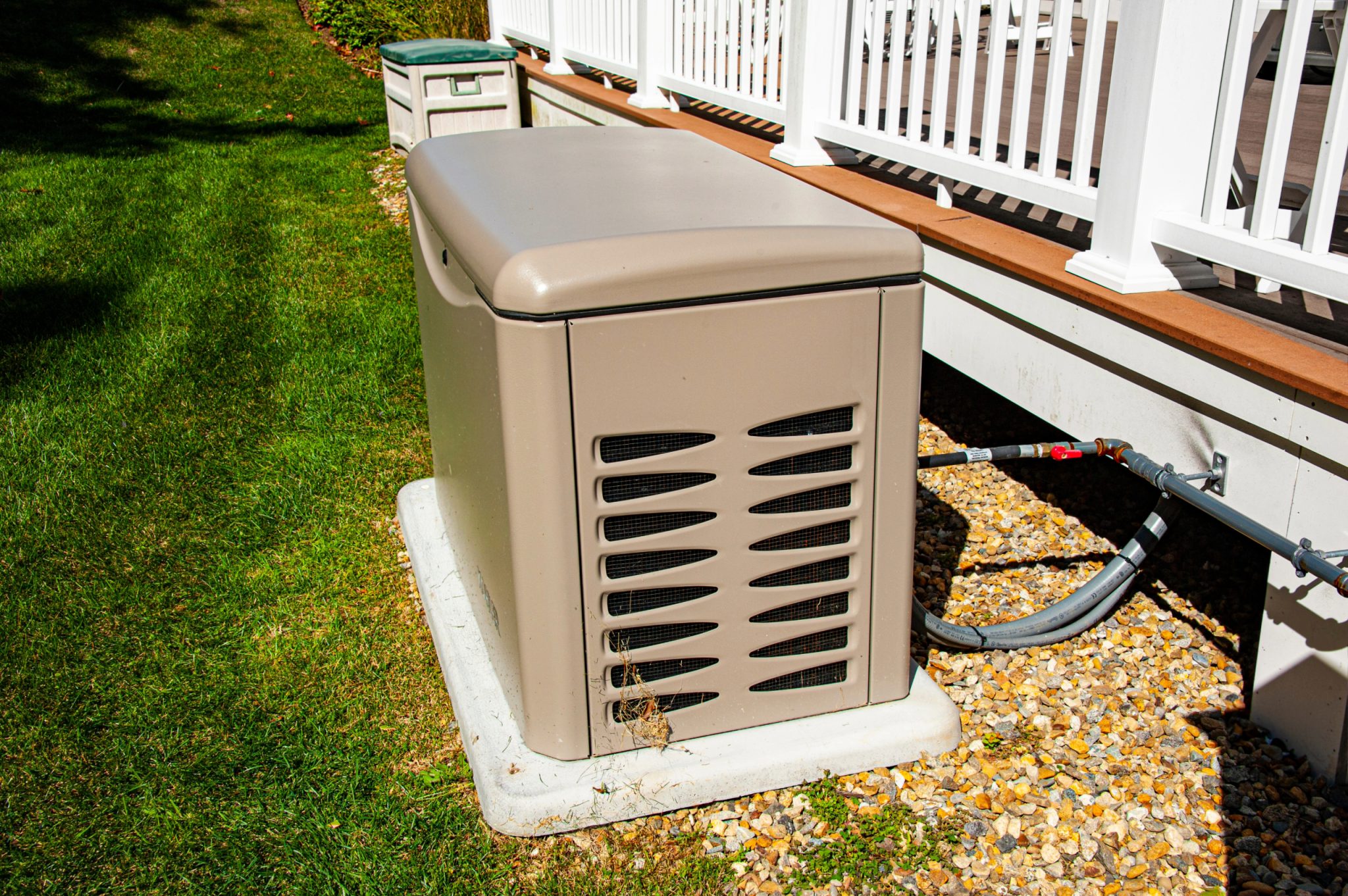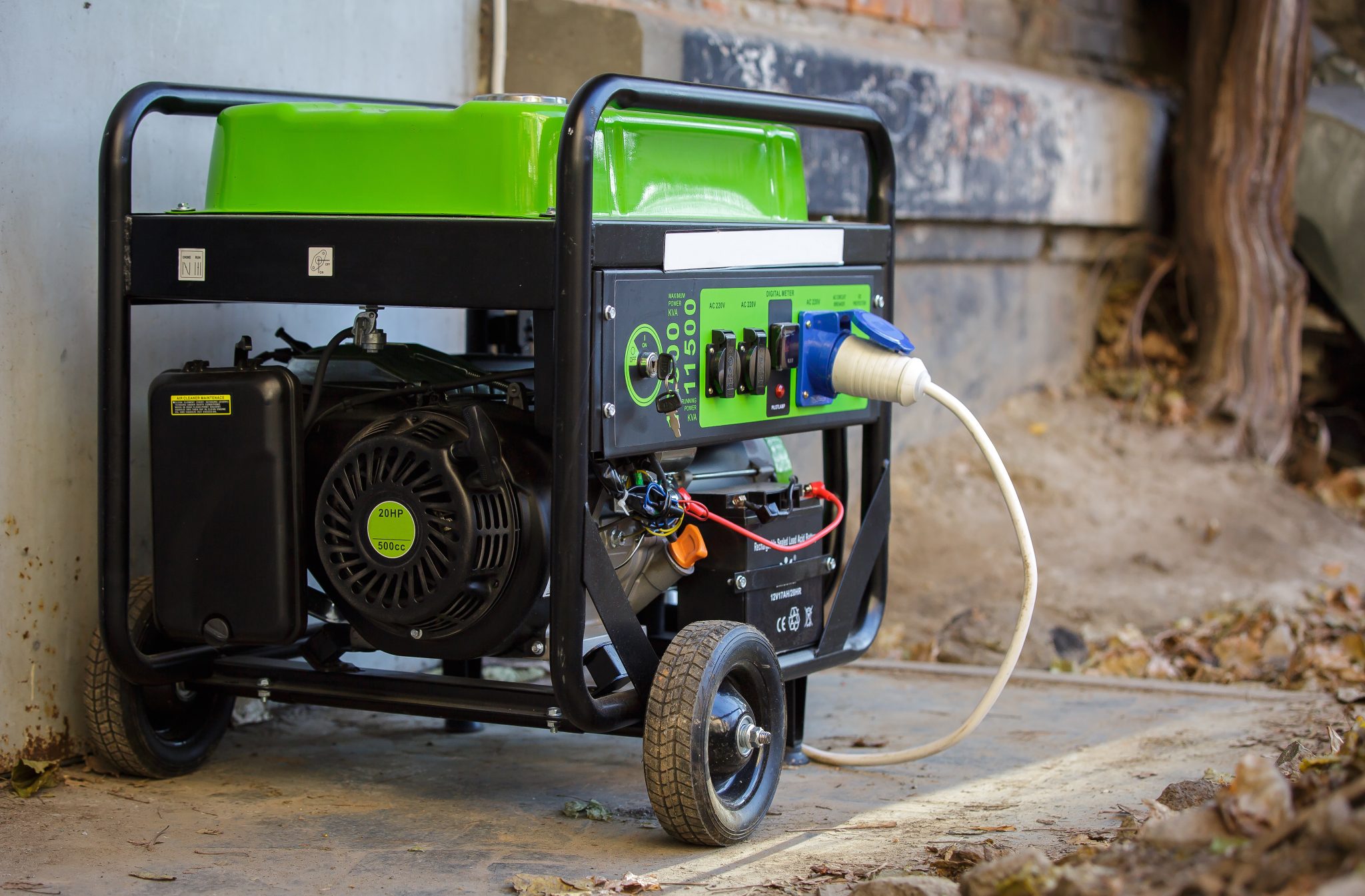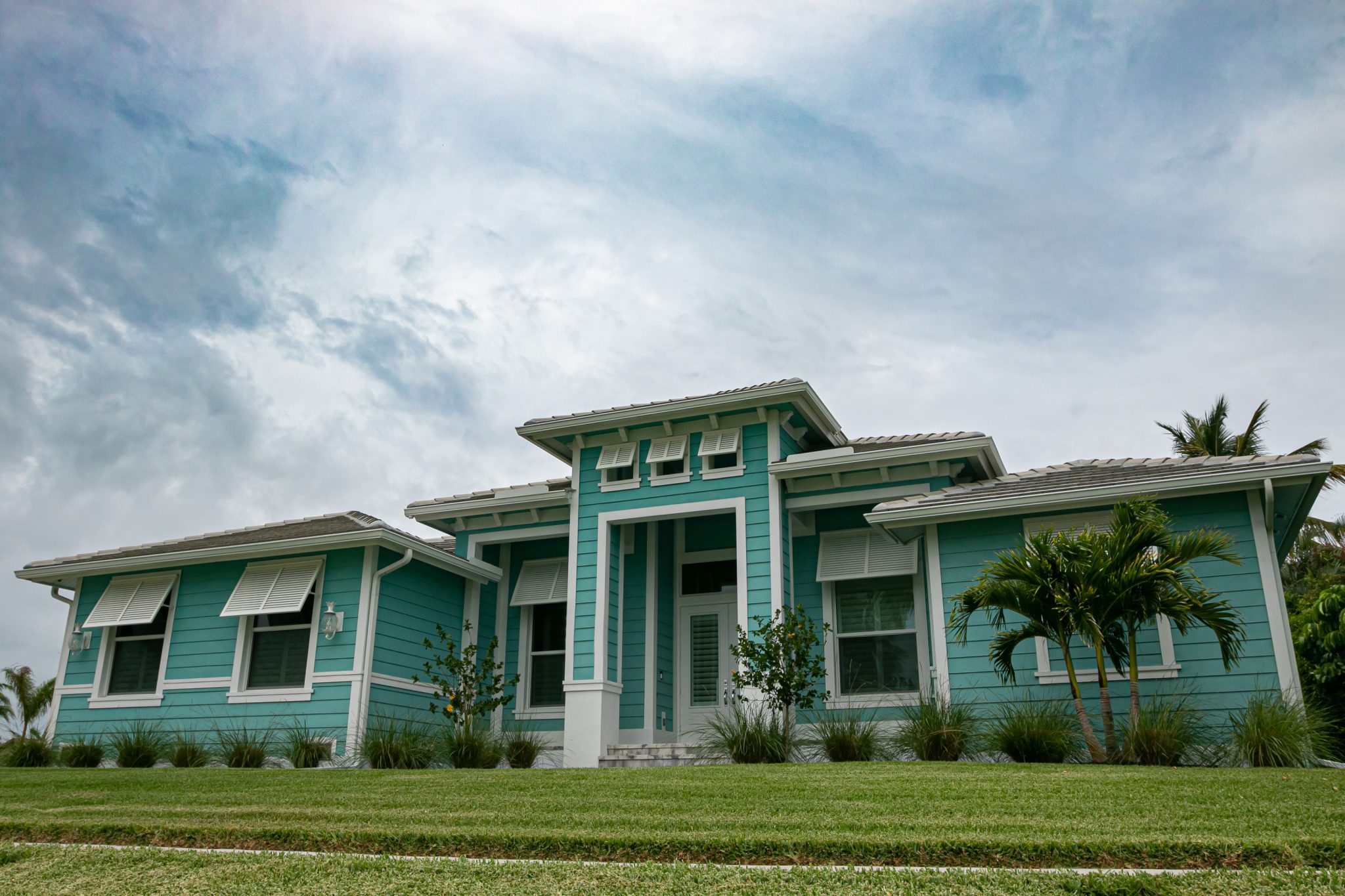
The Cost of a Whole Home Generator: Is It Worth It for Florida Homeowners?
Hurricane season in Florida can leave homes without power for days or even weeks. Power outages disrupt daily life, affecting critical systems like air conditioning, refrigerators and medical equipment. A whole home generator ensures your family stays safe and comfortable with reliable backup power when you need it most.
But how much does a whole home generator cost? And is it worth the investment? In this guide, we’ll break down the costs, benefits and financing options to help you make an informed decision.
What Is a Whole Home Generator?
A whole home generator is a backup power solution designed to automatically restore electricity during an outage. Unlike portable generators, whole home models are permanently installed and powered by natural gas, propane or diesel. They are capable of supporting essential appliances such as HVAC systems, refrigerators and medical equipment, making them invaluable during long-term power outages caused by hurricanes.
How Much Does a Whole Home Generator Cost?
The total cost of a whole home generator depends on factors like power capacity, brand and fuel type. Here’s a breakdown of typical price ranges and what each option covers:
- Entry-Level (7-10 kW): $3,000 – $5,000
- Powers a few essential appliances (e.g., refrigerator, lights and a few outlets).
- Typically can’t support central air conditioning.
- Mid-Range (12-20 kW): $5,000 – $10,000
- Ideal for mid-sized homes with multiple essential systems, including HVAC.
- Balances cost and power capacity without overloading.
- High-Capacity (22-30+ kW): $10,000+
- Designed for large homes with high energy demands.
- Can power the entire home, including major appliances, HVAC and additional systems like pool pumps.
Additional Features That Impact Pricing:
Several features can increase the price of a generator, often providing added convenience, efficiency and reliability:
- Automatic Transfer Switch (ATS): Automatically switches the power source to the generator when an outage occurs, ensuring seamless operation.
- Remote Monitoring: Allows you to monitor the generator’s performance and fuel levels through a smartphone app.
- Noise Reduction Technology: Reduces the noise output of the generator, which can be particularly useful in residential areas.
- Extended Warranty Options: Protects your investment with coverage for repairs and replacement parts beyond the standard warranty period.
Higher-capacity generators and those with advanced features may require a greater upfront investment but offer enhanced performance and reliability, especially in hurricane-prone areas where outages can last for extended periods.
Installation and Maintenance Costs
Installing a whole home generator comes with additional expenses. Professional installation, which is crucial for safe and reliable operation, typically costs between $2,000 and $6,000. This cost can vary depending on several factors, including the need for electrical upgrades, site preparation (such as installing a foundation or slab) and fuel line connections for natural gas or propane systems.
Once installed, regular maintenance is essential to ensure the generator functions properly during power outages. Annual maintenance costs typically range from $200 to $500. These services often include oil changes, battery replacements and system inspections. Given the prolonged use generators may face during Florida’s hurricane season, staying on top of routine maintenance is especially important to maintain long-term reliability.
Benefits of a Whole Home Generator
- Reliable Power: Keep essential appliances like air conditioning, lights and medical equipment running during outages.
- Safety & Comfort: Maintain your family’s security and comfort by ensuring access to power during emergencies.
- Property Protection: Prevent issues such as spoiled food, sump pump failure and humidity damage.
- Increased Home Value: Homes equipped with whole home generators are often more appealing to buyers in hurricane-prone areas.
- Potential Insurance Savings: According to Consumer Reports, some insurance companies may offer a discount between 4% to 10% on the property portion of a homeowners insurance policy for homes equipped with an automatic standby generator.
Alternatives to a Whole Home Generator

A whole home generator offers comprehensive protection, but it may not suit every budget or household. Fortunately, there are other backup power options to consider, each with its own pros and cons, depending on your needs and circumstances.
Portable Generators are a common choice for short-term power needs. With a lower upfront cost of $500 to $2,500, they are more affordable than whole home systems. However, they provide limited power output and usually support only a few essential appliances, such as a refrigerator, some lights or a small window air conditioner. Portable generators require manual setup and regular refueling (typically with gasoline) and do not connect directly to your home’s electrical system. For this reason, they may not be ideal for prolonged outages or for those who require uninterrupted power for medical equipment.
Battery Backup Systems, often paired with solar panels, provide a clean energy alternative. These systems can store solar-generated electricity and offer quiet, eco-friendly operation. They are useful for maintaining power to critical appliances like lighting and communication devices, making them a popular choice for partial home coverage. However, battery capacity is limited, and without adequate solar recharging, these systems may not sustain power through multi-day outages — particularly during a hurricane when sunlight may be scarce.
Standby Inverter Systems are another option for critical backup needs. Compact and quieter than both portable and whole home generators, these systems are designed to power essential devices such as medical equipment or communication systems during short-term emergencies. While they are convenient and less disruptive, their limited capacity makes them unsuitable for providing power to multiple large appliances or an entire household.
While these alternatives offer varying degrees of support, they often lack the automatic, seamless operation and whole-home coverage of a permanent generator. If long-term reliability and comprehensive protection are priorities — especially during Florida’s hurricane season — a whole home generator remains the most dependable solution.
Frequently Asked Questions About Home Generators
If you’re considering a whole home generator, you likely have questions about costs, benefits and sizing. Below are answers to some of the most common questions homeowners ask:
Do I need a generator in Florida?
With Florida’s hurricane season bringing a high risk of extended power outages, having a generator can be a crucial part of your emergency preparedness plan. Power outages lasting several days or even weeks can cause major disruptions — spoiled food, heat-related illnesses, sump pump failures and loss of critical medical equipment are just a few risks. A generator offers peace of mind by ensuring your family stays safe, comfortable and connected during emergencies. While it’s not legally required, many Florida homeowners view a generator as essential protection.
Is a generator worth it?
For homeowners in areas prone to hurricanes and frequent outages, a generator often pays for itself in the long run. Beyond preventing short-term discomfort, a generator can protect your home from costly damage. It keeps vital systems like sump pumps and HVAC running, which helps prevent flooding, humidity-related mold and other structural issues. Additionally, homes with whole home generators tend to have higher market appeal, particularly in hurricane-prone regions. If you rely on medical devices or work from home, the ability to maintain power can also provide critical peace of mind and financial stability.
What size generator do I need for my home?
The right generator size depends on your home’s power demands and the appliances or systems you want to keep running during an outage. For most mid-sized homes, a 12-20 kW generator is sufficient to power essential systems, including HVAC, refrigerators, lighting and a few outlets. Larger homes or households with greater energy needs (such as pool pumps, multiple HVAC units or extensive electronic systems) may require a 22-30+ kW generator. Consulting with a professional installer can help determine the exact size needed based on your specific requirements.
How long can a generator run during an outage?
The runtime of a generator depends on its fuel source and fuel capacity. Natural gas generators can run indefinitely as long as the supply remains uninterrupted. Propane or diesel generators, on the other hand, are limited by the size of the fuel tank. These models may require periodic refueling during prolonged outages, which can be challenging in storm conditions. Choosing a generator with remote monitoring features can help you track fuel levels and performance, allowing you to plan refueling in advance.
Can I finance a whole home generator?
Yes, many financing options are available to help homeowners spread out the cost of a generator. In Florida, the Property Assessed Clean Energy (PACE) program allows homeowners to finance installation with no upfront payments. Repayment is made through property taxes. Other financing options may include loans through your bank or credit union, as well as payment plans offered by generator suppliers or contractors. Financing can make it easier to invest in hurricane preparedness without placing a strain on your budget.
Funding Options: How to Afford a Whole-Home Generator
For many homeowners, dropping $10,000 on a generator upfront isn’t realistic. But that doesn’t mean you have to go without backup power or put your family’s safety at risk. That’s where Florida PACE (Property Assessed Clean Energy) funding can help.
With no upfront costs and long-term financing, PACE allows homeowners to install hurricane protection upgrades, including generators and pay over time through their property tax bill. Unlike traditional financing, there’s no credit score requirement, and in many cases, the assessment may transfer with the property if you sell your home.
Here’s how Florida PACE can help:
- No Upfront Payment: Get your generator installed now and pay later, so you’re prepared before the next storm hits.
- No Minimum Credit Score: Approval is based on your home’s equity, not your credit history, making financing accessible regardless of your score.
- Easy Approval Process: Approval is based on your home’s equity, not your credit score, making it accessible even if traditional financing isn’t an option.
- Flexible Long-Term Payment Plans: Finance your upgrades for up to 20+ years with manageable payments that fit your budget.
Protect Your Home Before the Next Storm
Unexpected power outages can leave your family vulnerable — but with Florida PACE funding, you don’t have to wait to protect your home. A whole home generator can keep your lights on during hurricanes and help your home stay safe and livable, offering lasting security and peace of mind.
Don’t wait for the next storm — finance a whole home generator with no upfront cost! Apply for PACE funding today to secure your home’s protection before the next hurricane strikes.



